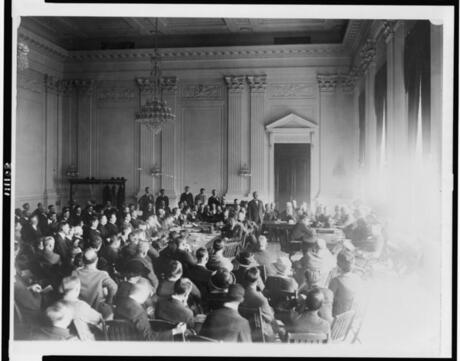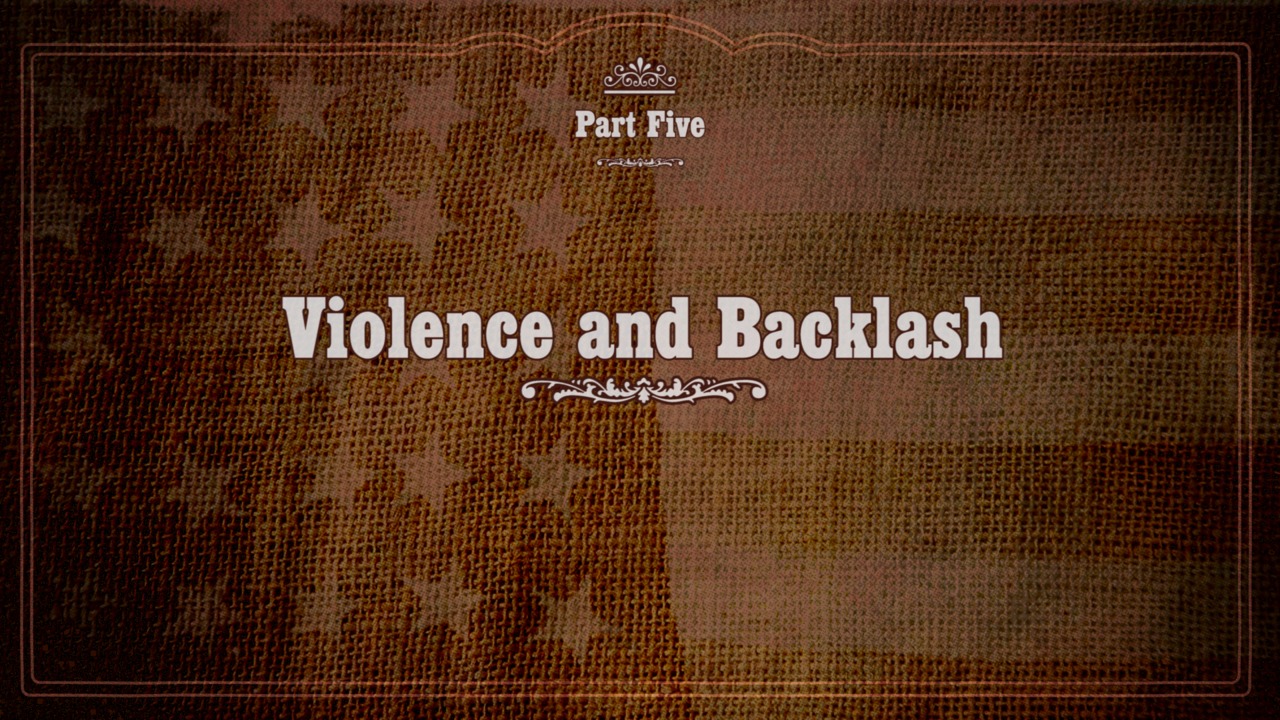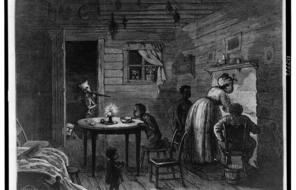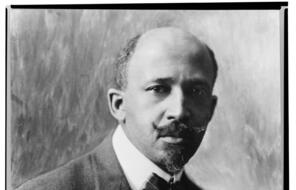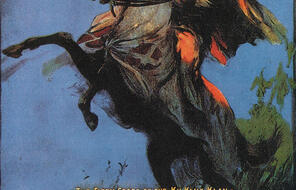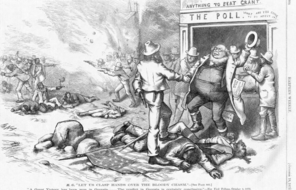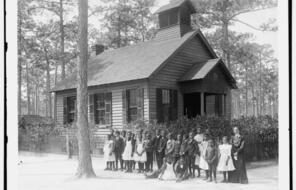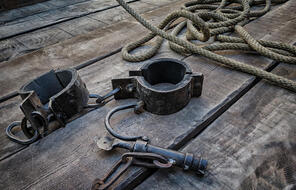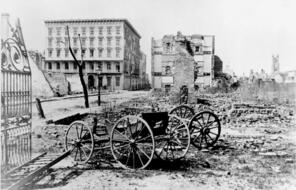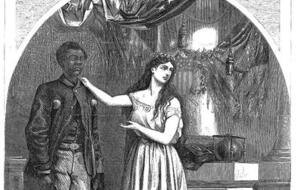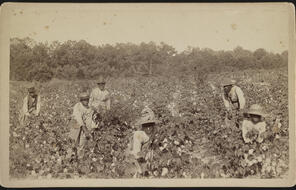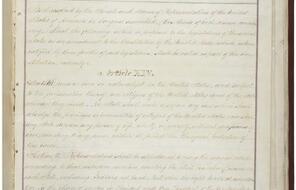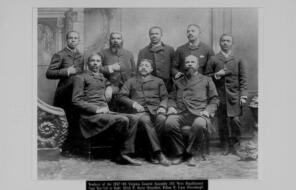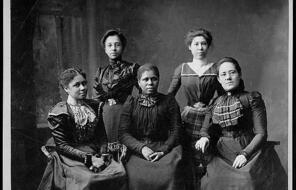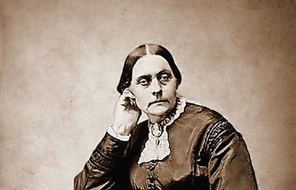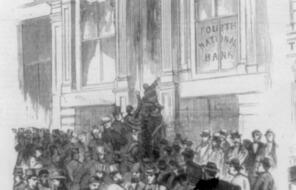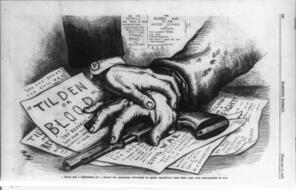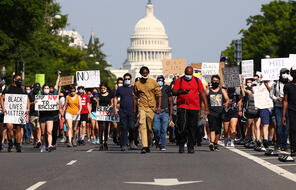Lecturing on Reconstruction, historian David Blight argued: “Every revolution we have causes a counter-revolution.” Indeed, the unprecedented period of interracial democracy that occurred after the passage of Radical Reconstruction policies also touched off a determined, violent backlash in the South.
By exploring the first stages of this backlash against interracial democracy, largely carried out by the secretive organization known as the Ku Klux Klan, this lesson probes the nature of violence, the effects of violence and intimidation on democracy, and what it takes to prevent or overcome such a backlash. The history of the Klan in the 1860s and early 1870s and the federal response to its actions together raise important questions about democracy, change, and violence:
- Is backlash inevitable in a time of great change?
- What motivates people to commit acts of violence? What are the roles of hatred, fear, and the loss of power in inspiring violent acts?
- How do the effects of violence and intimidation highlight the fragility of democracy?
- How can a democratic society respond to violence and overcome the effects of terror? What power do bystanders and upstanders have in the response?
The Formation of the Ku Klux Klan
The Ku Klux Klan was a collection of local extremist groups loosely affiliated (rather than centrally planned) around a unity of purpose: white supremacy. According to historian Eric Foner, “The Klan during Reconstruction offers the most extensive example of homegrown terrorism in American history.”
First appearing in Tennessee in 1865, the Klan rose to prominence during the 1868 presidential election. Klansmen killed thousands of freedpeople and Republican supporters across the South, and they injured and threatened scores more. They often visited their victims at night, wearing hoods and robes to preserve anonymity and provoke fear.
In this lesson, students will explore what fueled the spread of the Klan and its acts of violence and intimidation. In one document in the lesson, W. E. B. Du Bois offers some provocative insights into the motivation for violence (from his 1935 book on Reconstruction). For Du Bois, hatred and human depravity are not sufficient explanations; he sees in every Klan group a “nucleus of ordinary men” driven by fear— of being “declassed, degraded, or actually disgraced”—and emboldened by the promise of anonymity. Records such as those kept by the US Army Major Lewis Merrill in South Carolina show that, indeed, many business leaders, doctors, lawyers, and other prominent community members participated in the Klan. That Merrill was able to keep such documentation suggests that their hoods did not provide Klansmen with quite the level of anonymity they desired.
The Effects of Klan Violence
Regardless of the factors that fueled Klan violence, such attacks countered the spread of democracy during Radical Reconstruction. In the 1868 presidential election, few if any votes were cast for the Republican candidate, Ulysses S. Grant, in many heavily Republican Southern counties where Klan violence took place. Grant won the election anyway, and those who did vote Republican, as Abram Colby testifies in a document in this lesson, often later became Ku Klux Klan targets. The direct effects of violence on the ballot box are clear, but widespread brutality also chipped away at many citizens’ confidence in the legitimacy of Republican-led government. As one victim of the Ku Klux Klan declared, “I consider a government that does not protect its citizens a failure.”
As students will explore in lessons to come, unfounded doubts about the legitimacy and competence of government run by Republicans helped to undermine support for Reconstruction as the 1870s progressed.
Responding to Violence
Few good options existed for Southern states to respond effectively to Klan violence. Many Southern governors were hamstrung in fighting back against Klan violence because their state militias were largely comprised of African Americans. According to historian Michael Perman, these governors were faced with an impossible dilemma: using their militias against the Klan would exacerbate the perception of “Negro rule” fueling much of the violence, but not responding to the violence at all would signal weakness and fuel the belief that their governments were incompetent and illegitimate.
The story of Yorkville, South Carolina, raises important questions about the role of bystanders and upstanders in responding to the Klan. As reports of widespread Klan violence around Yorkville reached Washington, Major Lewis Merrill was assigned to the area to monitor conditions there. Skeptical of the dramatic reports of violence he received before arriving, Merrill was shocked by the frequency and ferocity of the Klan brutality he witnessed. Without authority to make arrests or use force to stop the violence, Merrill compiled meticulous documentation of Klan activity and was able to identify many of the leaders and perpetrators in his records. He also tried to marshal public opinion against the violence, and succeeded in persuading community leaders to publish a plea for an end to the violence. But many of those who signed the article were Klan members themselves, and the violence did not stop. Merrill continued to gather evidence that would eventually prove critical after the federal government decided to intervene. First, Congress would have to act.
In 1870 and 1871, Congress passed a series of laws known as the Enforcement Acts. The third of these laws is known as the Ku Klux Klan Act, and it, especially, provided the federal government with the power to respond to Klan violence and intimidation. With the passage of this law, according to Eric Foner, “conspiracies to deprive citizens of the right to vote, hold office, serve on juries, and enjoy the equal protection of the laws could now, if states failed to act effectively against them, be prosecuted by federal district attorneys, and even lead to military intervention and the suspension of the writ of habeas corpus.”
This was the first law that enabled the federal government to put individual citizens on trial for a federal crime. Using the powers provided by the Ku Klux Klan Act, President Grant sent federal troops to South Carolina to arrest more than 500 Klansmen in York County alone, based on Merrill’s evidence. Thousands of Klansmen were prosecuted nationwide. While only a small percentage of prosecutions led to convictions and prison sentences, Klan violence dramatically subsided by 1872. Thousands of Klansmen fled their home states and ceased Klan activities to avoid prosecution.
The federal response to the Klan in South Carolina made many Americans uneasy; they worried that the federal government had gone too far in interfering in the affairs of a state. The Ku Klux Klan trials prompted Frederick Douglass to declare, “The law on the side of freedom is of great advantage only when there is power to make that law respected.” In 1872, it remained an open question whether or not the federal government would be willing to exercise such power again.
Because so many Klan members avoided prosecution and prison, conditions were ripe for a second wave of violence and backlash later in the 1870s.
